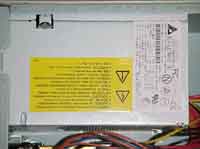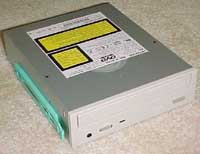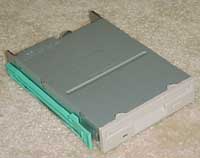Palo Alto Products PA-600 ATX Mid-Tower
by Anand Lal Shimpi on September 12, 1999 5:05 PM EST- Posted in
- Cases/Cooling/PSUs
With the cover off the PA-600 starts to truly separate itself from the ATCX, not without first making use of the same power supply we found in its older brother however. The 235 Watt Delta Electronics power supply is fully ATX 2.01 compliant, FCC/CE approved and includes 5 standard and 1 mini power connector. The slots for air to flow into and out of the power supply are cut as large as possible. Unfortunately, the power supply does not feature a physical power switch on the back that many other units do and that can come in quite handy at times.
Moving away from the power supply and deeper into the case we found the same examples of EMI shielding behind the ATX I/O shield as we did with the ATCX. It's good to know that at least some of Palo Alto's standards were not compromised in favor of obtaining a lower cost with this case.

One of the major weaknesses of the ATCX was its poor expansion, and for those users that were soured on Palo Alto by that factor, it doesn't get any better with the PA-600. There are a total of 4 external drive bays, two of them are 5.25" bays and the other two are naturally 3.5" bays. The major complaint here comes for the two 3.5" bays, simply because the use for two 3.5" bays is much less than having a third 5.25" bay and only one 3.5" bay. The main difference between the ATCX and the PA-600 in terms of expansion is the loss of the third external 3.5" bay which isn't that big of a loss in the first place. After installing a CD-ROM drive and a CDR, all of the available 5.25" bays are occupied, so if you're strongly considering going after this case you have to make sure that you either 1) won't be installing too many 5.25" devices or 2) don't mind using external devices instead of internal 5.25" drives.
All of the external drive bays boast a screw-less installation that wasn't present with the ATCX. Unlike the Enlight method of a "screw-less" design, the PA-600 makes use of snap on drive rails that rely on tension to keep them in place. The drive rails are strips of plastic with a round strip of metal about the diameter of a small screw running the entire length of the rail. The metal protrudes from the plastic rail at two points, the distance between these two points is slightly smaller than the distance between two screw holes on a CD-ROM drive (or most other 5.25" drives for that matter). So with a small amount of stretching, the two metal protrusions stick into two screw holes on the drive and the tension in the metal keeps the rail in place.
Palo Alto provides enough rails to populate all four of the external drive bays, and they provide two different types of rails. One that fits most 5.25" drives (i.e. CD-ROM, DVD drives, etc...) and the other that fits most 3.5" drives (i.e. hard drives, floppy drives, zip drives, etc...) so you won't have to worry about the rails not lining up with your screw holes.
The only complaint here comes from the fact that the rails are made of plastic, and a tad difficult to orient at first (as are all drive rails the first time you use them). Especially since Palo Alto only provides enough drive rails to get the job done, you will want to take extra care to make sure that you don't break any of the rails.
At the same time, since they are made of plastic, the constant friction caused by rubbing them against the metal of the chassis could possibly wear them down over time and may also inadvertently lead to breakage if you have a habit of constantly removing your drives. On the other side of the argument, the drive rails make installation/removal of drives an extremely easy task, unlike other drive rails that require you to screw them onto the drive before installation essentially defeating the purpose of using drive rails to make for an easier installation.















0 Comments
View All Comments